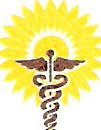Osteoporosis is a condition where calcium in the bone is absorbed resulting in the bones becoming weak and brittle. The most serious complications of osteoporosis are fractures, especially in the hip, wrist and back. In fact, approximately 33% of those who reach age 90 will have had a broken hip. 20% of individuals over age 65 who break their hips die as a result of the injury. Apart from falls, osteoporosis is a major contributor to hip fractures. The thinning of the bone makes it more breakable. An injury that would normally not break a bone, would do so in osteoporotic conditions.
People that are at higher risk for osteoporosis include thin individuals,smokers, alcohol abusers, people that do not exercise and those that have a poor calcium intake or have low Vitamin D levels. Women, especially, are more vulnerable to osteoporosis because of hormonal changes that occur at menopause. Osteoporosis begins quite early in life, perhaps, during the early 30's. Most people take calcium below the recommended dosage (1,000mg per day). It is not surprising, therefore, that the incidents of osteoporosis is quite high in the general population.
One way osteoporosis can be prevented is by increasing calcium/Vitamin D in the diet.In general,one glass of milk a day or an equivalent of another dairy product is useful. Those that cannot tolerate this should take approximately 1-2 grams of a calcium supplement daily. A calcium based antacid pill, such as Tums, is an inexpensive source of calcium. (However, too much calcium can cause kidney stones and other health problems). Weight bearing exercise, such as a daily 20 minute walk, or aerobic and weight lifting activities, have been shown to prevent bone loss. Stopping smoking and limiting alcohol consumption can prevent osteoporosis as well. Women going through menopause have another option: hormone replacement therapy. Many gynecologists used to routinely put many post menopausal women on estrogen supplements.That practice has stopped due to side effects and other serious risks of estrogen therapy.Conjugated estrogen creams are safer-though it has not been established if they help in osteoporosis. Osteoporosis is preventable and if adequate steps are not taken to do so, it can lead to serious injury and disability. The simplest way to prevent osteoporosis would be to start early in life by adequate calcium intake.
There have been recent developments in the treatment/prevention of osteoporosis.Medications such as Actonel,Fosmax and Evista are used in preventing/treating osteoporosis. Vitamin D levels can now be measured by a lab test.Bone density measurements can give an idea how strong the hip and back bones are-since they are commonly affected in osteoporosis.Thus it is possible to get a head start to thwart this common disease.
Non medical preventive methods such as: exercise (especially resistance or weight training), avoiding smoking/alcohol and a balanced diet enriched with calcium are essential.
Osteoporosis is a preventable/treatable condition and can affect men as well as women.It is important to discuss prevention with your doctor.
Please call us with any questions at 845 247 WELL
Thursday, June 3, 2010
Subscribe to:
Post Comments (Atom)




No comments:
Post a Comment